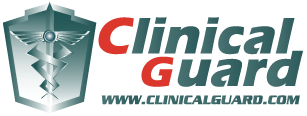Sleep Apnea and Oximeter
Apnea, or 'Apnoea', is a technical term for suspension of breathing. An apnea event is defined as a breath cessation for a minimum of 10 seconds, with a neurological arousal and/or a blood oxygen desaturation of three to four or greater. Sleep apnea is a breath disorder during sleep which may cause serious consequences such as heart failure.
There are three types of sleep apnea are central sleep apnea, obstructive sleep apnea and complex sleep apnea (the combination of the two types). Central sleep apnea is caused by the imbalance of brain respiratory control center, while obstructive sleep apnea is caused by the obstruction of airway by decreased muscle tone or increased soft tissue around the airway (e.g. obesity or aging). Obstructive sleep apnea makes up about 84% of sleep apnea cases; the complex sleep apnea makes up about 15% and the central sleep apnea makes up 0.4%. [1]
The symptoms of obstructive sleep apnea commonly include loud snoring, restless sleep, and sleepiness during the daytime. The treatment of this type of sleep apnea is usually the use of breathing treatments, such as Continuous Positive Airway Pressure (CPAP). Other habits that contribute to symptoms of sleep apnea is smoking, drinking alcohol, or losing large amounts of weight.
Due to the drop of oxygen level and increase of carbon dioxide level during sleep, hypoxia and hypercapnia are usually the results of central sleep apnea. Consequently, hypoxia and hypercapnia have effects on human body and could result in more serious health issues, angina, arrhythmias, heart attacks or at worst sudden death. [2]
Diagnostic tests of sleep apnea include home oximetry or polysomnograph readings in a sleep clinic. Oximeters that measures blood oxygen levels are a necessary device to measure normal stats in a person’s body while their asleep. According to the results of a study published in the Jan. 15 issue of the American Journal of Respiratory & Critical Care Medicine.
"The practical purpose of diagnostic assessment in most cases of obstructive sleep apnea is to predict which patients have symptoms that will improve on treatment. Portable monitors record primarily oxygen saturation, can be used at home without supervision, and are cheaper [than polysomnography]."
OctiveTech oximeters offer a flexible and affordable way for sleep apnea sufferers and their doctors to monitor their blood saturation during sleep. We especially recommend the handhelds that alarm at a certain low blood oxygen concentration.
References:
[1] Mayo Clinic Discovers New Type Of Sleep Apnea, ScienceDaily, 2006
[2] Sleep apnea, Wikipedia
Disclaimer:
The information on this website aims to provide customers with relevant knowledge regarding our products. Under no circumstances should the information be used for therapeutic purposes. Customers must consult their doctors for the correct use of these information and products. ClinicalGuard.com is not responsible for any losses or accidents caused by the use of information on this website.

